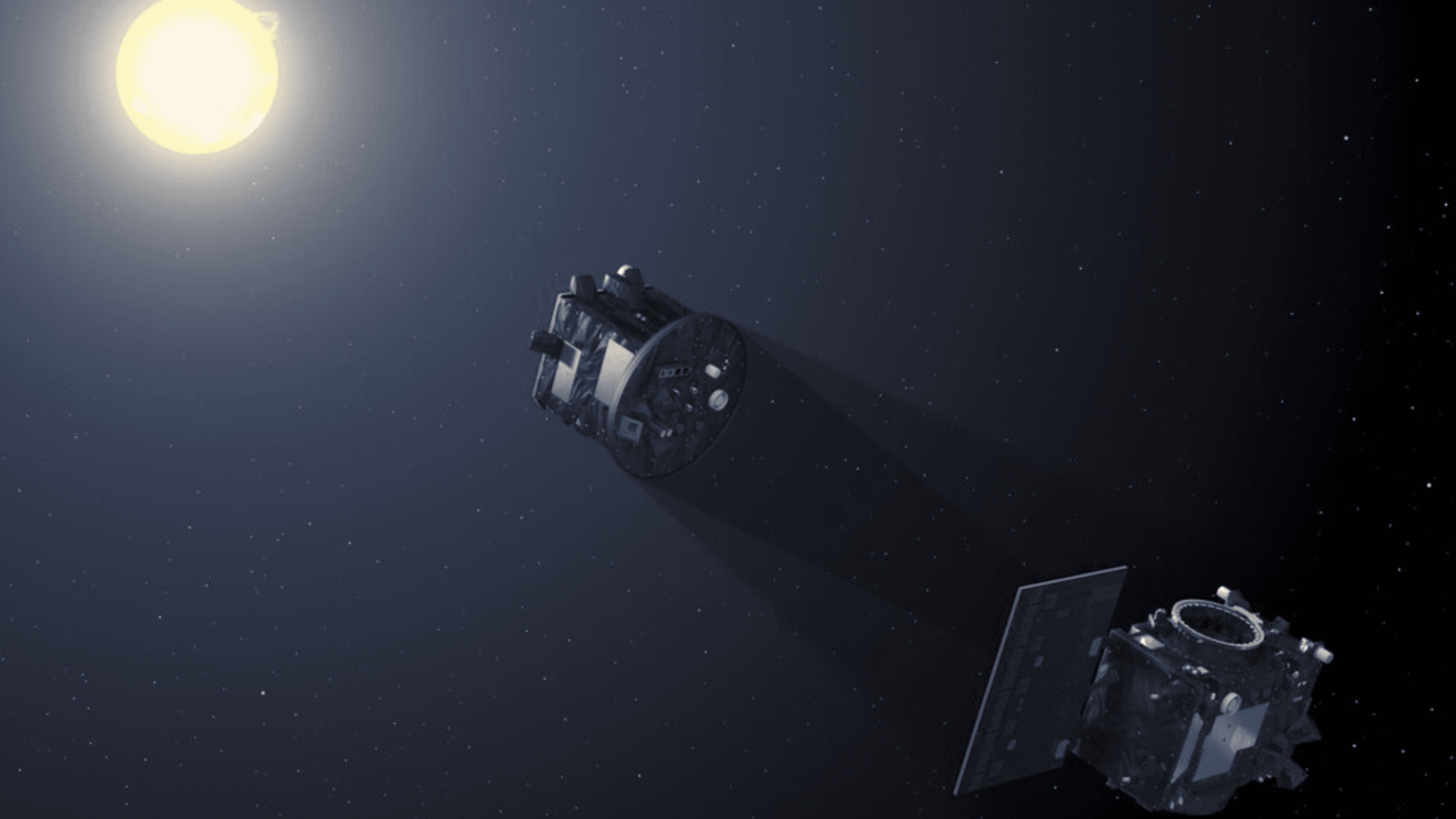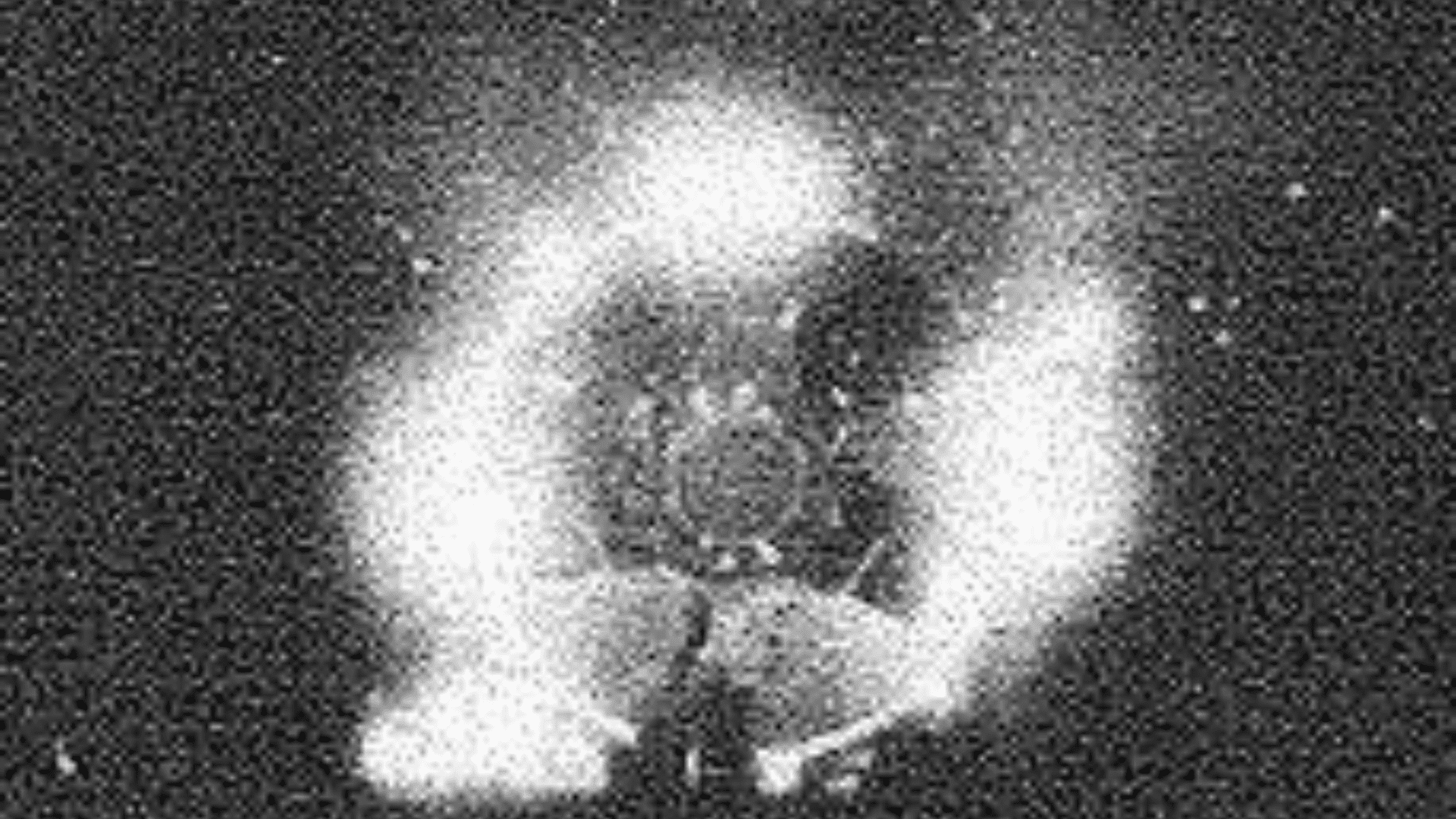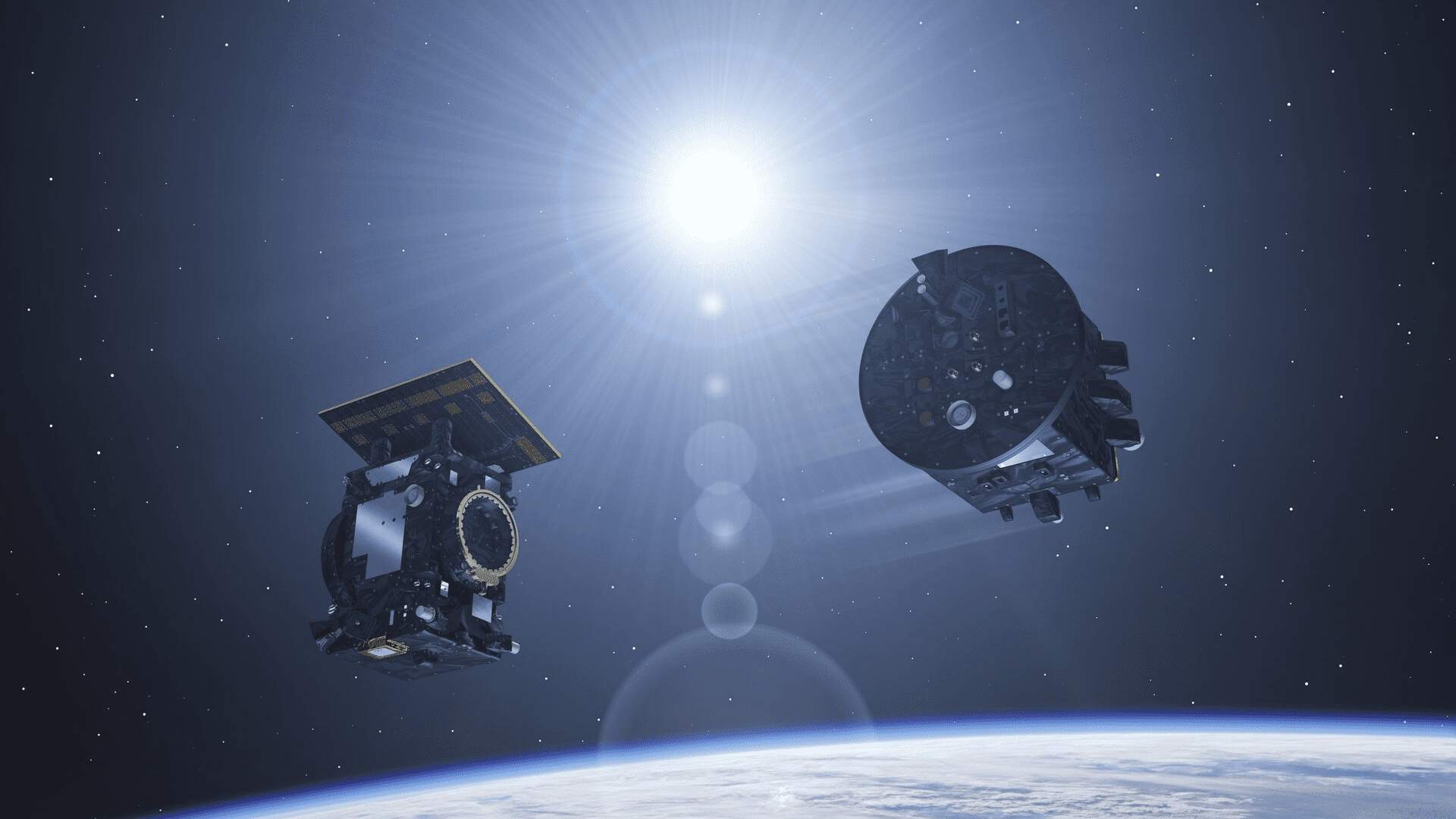A good chunk of the United States witnessed April’s total solar eclipse from Texas to Maine. But what if scientists could produce a solar eclipse on demand? The European Space Agency (ESA) aims to do that with its Proba-3 mission.
Artificial Solar Eclipse

Proba-3’s Occulter spacecraft is undergoing pre-flight testing. The satellites will line up precisely with the Sun when it launches this year. After it lines up, the Occulter will cast a shadow onto the face of the Coronagraph and blank out the Sun to reveal the corona.
“The two spacecraft will act as if they are one enormous 150-m long instrument,” said Dietmar Pilz, ESA Director of Technology, Engineering and Quality. “Achieving this will be extremely technical challenging however, because the tiniest bit of misalignment and it won’t work.”
According to the ESA, this is not a new concept. A cylindrical Apollo capsule tried the same thing for a Soviet Soyuz spacecraft during the Apollo-Soyuz Test Project in 1975. However, the ESA routinely aims to produce artificial solar eclipses with Proba-3. Through precise formation flying, they want to produce them for up to six hours at a time per 19-hour, 36-minute orbit.
Since the Sun is 400 times bigger than Earth’s Moon and precisely 400 times further away, the Moon reveals the solar corona when the two are aligned perfectly in space.

Explore Tomorrow's World from your inbox
Get the latest science, technology, and sustainability content delivered to your inbox.
I understand that by providing my email address, I agree to receive emails from Tomorrow's World Today. I understand that I may opt out of receiving such communications at any time.
Rarely Seen
The solar corona is a region rarely seen in our solar system. It’s a region of interest both scientifically and practically. It’s a million degrees hotter than the surface of the Sun beneath it. Additionally, the corona causes solar, wind, and space weather. It also causes violent ejections known as ‘coronal mass ejections’ that drive space weather and solar storms. These could potentially impact satellites in orbit and terrestrial power and communications networks.
Scientists want to see more of the corona. To do this, specialized telescopes can mimic a solar eclipse. These telescopes are called ‘coronagraphs’ and create engineered shields to cover the Sun within their field of view. However, their effectiveness is limited because of a phenomenon called ‘diffraction.’ Diffraction is when stray light spills over the edges of coronagraphs. They move the occulting disk further apart from the observing coronagraph to minimize this effect. However, the practical limits on the size of the spacecraft make this impractical for space.
Performing as One

Because of the precise formation of the two spacecraft, the instrument will yield data as if it were a single rigid spacecraft. According to the ESA, this opens up a previously elusive study region. A suite of progressively more precise positioning technologies allows precise accuracy. There are radio-based inter-satellite links, visible-light cameras homing in on LEDs, and finally, a laser beam reflected between spacecraft.
New Types of Space Missions
Successful precise formation flying means a whole new era for science and applications. According to the ESA, “Missions could be flown that are much larger than any single spacecraft.” Meanwhile, precise orbital rendezvous would make in-orbit satellite servicing feasible, extending the lifetime of space infrastructure.
There is no launch date set, but it is planned for this year.







